7 Best Cities to Visit in Austria (From a Traveler Who Hates Tourist Traps)

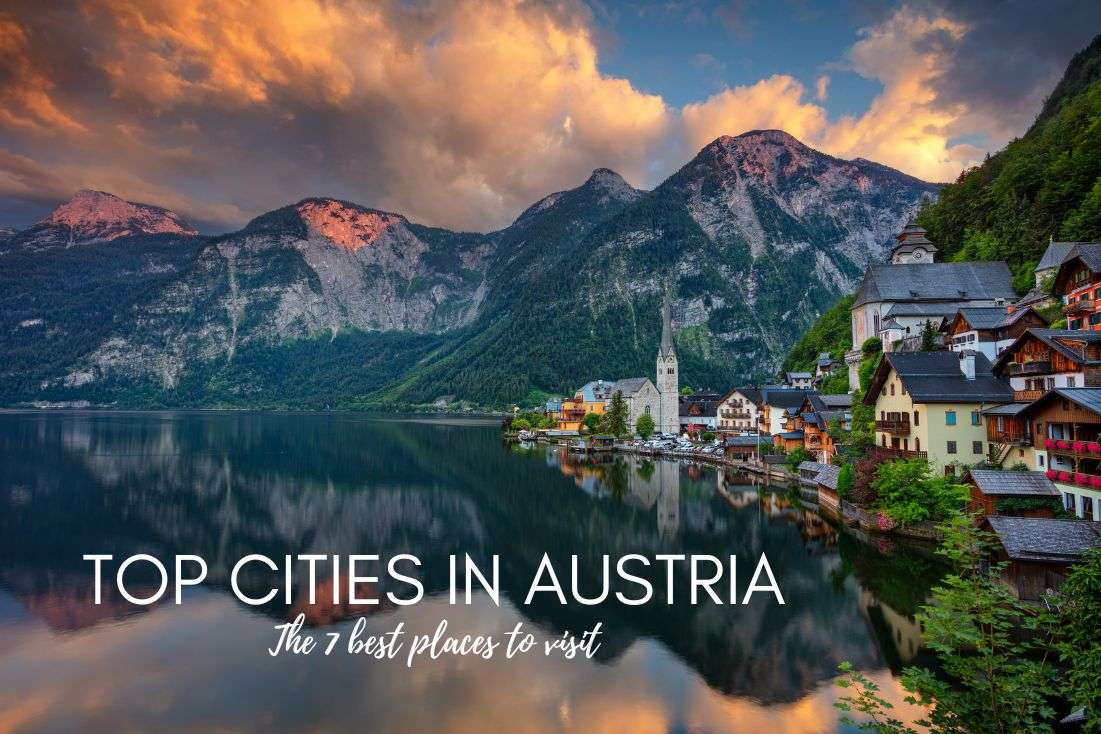
Let me save you hours of pointless research: not every city in Austria is worth your time. Sure, this country is stuffed with epic mountains, lakes, and charming towns, but when it comes to cities, the truth is—some are stunning, others are boring, and a few are flat-out tourist traps.
After traveling across Austria more times than I can count, I’ve narrowed it down to the seven best cities to visit in Austria. No sugarcoating. No paid-for or made-up opinions. Just real, brutally honest advice based on my personal experience.
This isn’t a generic “top tourist cities” list. These are the places I’d tell my best friend to visit—and the ones I’d warn them to avoid. Whether you want jaw-dropping Alpine views and a waterfall in the middle of the city, medieval old towns that aren’t crawling with tourists, or a city where you can geek out over futuristic museums, this list has something worthwhile for everyone.
Ready to find out which cities in Austria are actually worth it? Let’s go!
My list of the best cities and towns to visit in Austria: cheat sheet
-
Hallstatt—Ridiculously pretty lakeside village. Crowded, but worth it.
-
Innsbruck—Alpine capital with medieval charm and mountains so close you can smell them.
-
Salzburg—Baroque overload. Go for the fortress views, and stay if you like Mozart.
-
Graz—Artsy, weird, and underrated.
-
Linz—Industrial past meets tech and modern art.
-
Bad Gastein—Faded spa town with a massive waterfall slicing through it.
-
Vienna—Imperial, polished, and finally growing on me.
Sometimes, all you need to do is take the first step... I've filtered out the best hotels in Austria for you
Save it for yourself to come back to later, or share with your friends on social media!
Map: The best cities to visit in Austria based on my experience
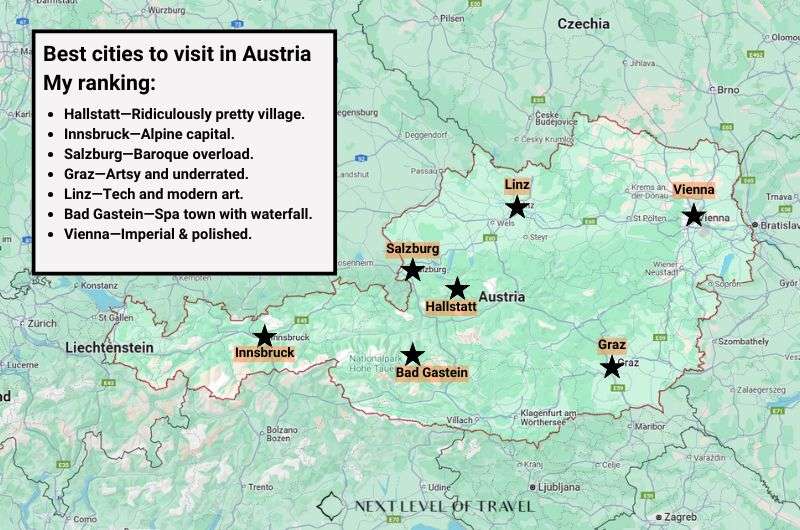
The winners of my Austria’s best cities ranking are spread out all over the country
1. Hallstatt: Austria’s Most Beautiful Village
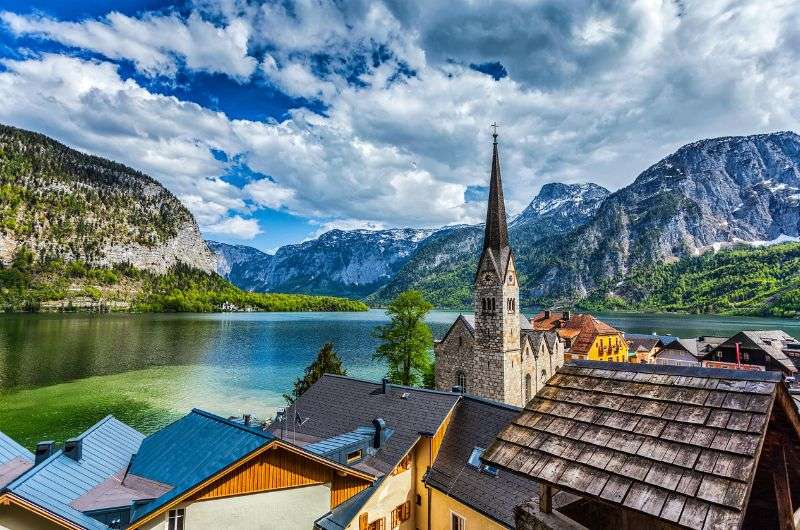
My absolute favorite city in Austria
Why I think it’s one of Austria’s best cities: It’s obscenely pretty. And while I normally steer clear of places where tourists outnumber locals 10 to 1, Hallstatt has earned to be the exception to my rule.
Further reading: The top places to visit in Hallstatt
Let’s get one thing straight—Hallstatt isn’t really a city. It’s barely a town. But when people ask me, “What’s the most beautiful city in Austria?” Hallstatt always comes out of my mouth first. It’s so pretty that China and Turkey cloned it, and there’s a whole culture named after it! (The Hallstatt Culture. You could say Hallstatt was kind of the Silicon Valley of the early Iron Age.)
Hallstatt might be swarmed with tourists most of the time, but it’s still the postcard-perfect face of Austria—for a reason. It’s set in a ridiculously charming landscape on the shore of Halsttätter See, backed by snow-capped mountains, so it’s impossible to get a bad view.
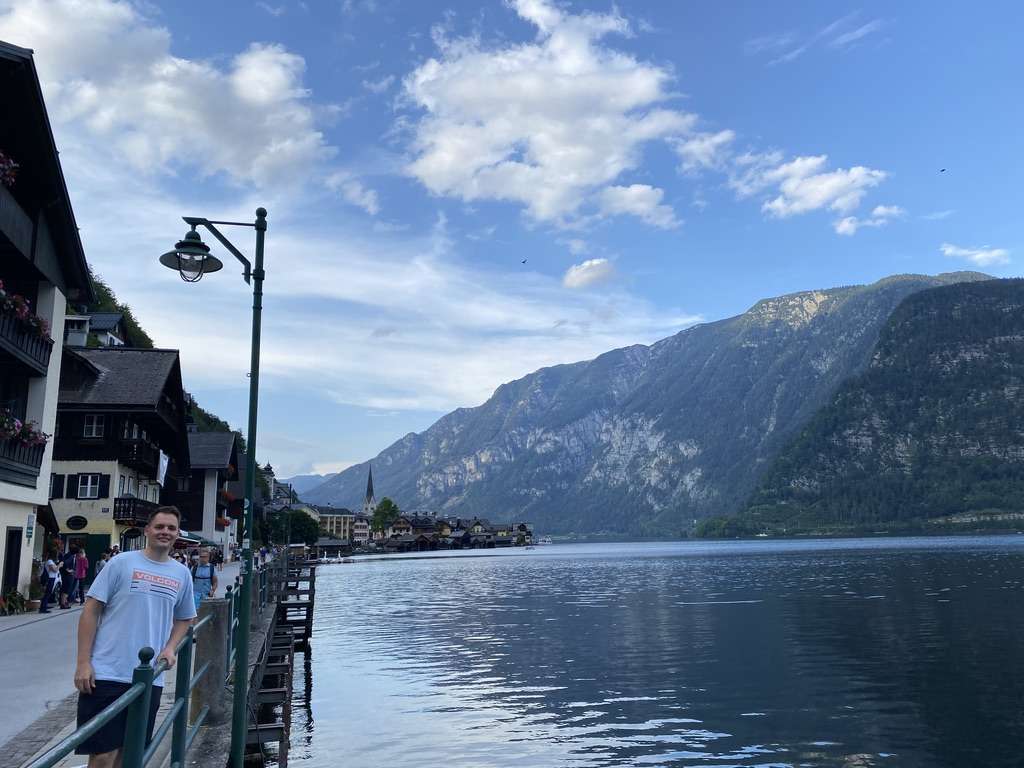
A little walk through Hallstatt
Quick tips for Hallstatt
-
Don’t miss: If you do one thing here, make it the Salt Mine tour. Sliding down wooden chutes in a 7,000-year-old mine beats yet another museum any day.
-
Avoid: Tourist cafés charging EUR 8 for a coffee.
-
Crowds: Expect them. Hallstatt isn’t a hidden gem, it’s the worst-kept secret in Austria. Forget day trips; stay overnight (or 2) for a quieter experience.
-
Time needed: Hallstatt is the perfect base for exploring the area, so if you stay for 2 – 3 nights, you’re in the best spot to see the town and nearby Dachstein.

2. Innsbruck: The Alpine city that actually lives up to the hype

Innsbruck is a beautiful city surrounded by the Alps
Why I think it’s one of Austria’s best cities: Because it somehow manages to pull off medieval charm without feeling like a tourist circus. What makes Innsbruck one of Austria’s best cities is the variety—epic mountain hikes, cool museums and day trips, and the great infrastructure of a medium-sized city.
Further reading: My insider tips for your Innsbruck trip
Innsbruck is one of the top Austrian cities I’ve visited, and not just because it’s surrounded by the super dramatic Alps. You know I love Austria’s countryside and this is where you’ll feel like you’ve been dropped into the picture-perfect middle of it all—Innsbruck is a fairytale city.
It’s the capital of Tyrol and the perfect base for hiking—Seefelder Joch is practically next door and looks like Mordor (minus the orcs).
I find the city itself surprisingly charming. Innsbruck has a population of 130,000, but its compact medieval old town is full of colorful facades, cobblestone streets, and the Golden Roof… yes, it’s actually gold-plated because Tyroleans are practical like that.
One of my favorite stops was Ambras Castle, home to the oldest museum in the world and an armory full of bizarre helmets.
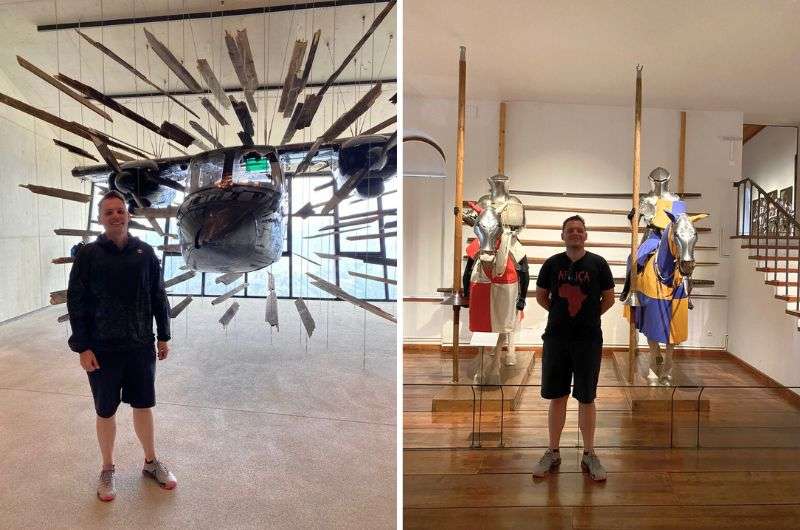
From medieval stepping into the spy movie—007 Elements
Quick tips for Innsbruck
-
Don’t miss: Schwaz Silver Mine, 007 Elements (James Bond museum), and the Swarovski Crystal Worlds (really), all reasonably close by.
-
Avoid: Sweating up the mountains by hopping on the slightly touristy Nordkette Cable Cars to the Top of Innsbruck.
-
Crowds: Manageable. It gets busy, but it’s not Hallstatt-level.
-
Time needed: Two full days is perfect. Enough time to explore the Old Town, head up the mountains, and squeeze in some side trips.
3. Salzburg: Baroque overload, Mozart mania, and a fortress with a view

The city where Mozart was born @ Salzburg
Why I think it’s one of Austria’s best cities: Because it’s impossibly well-preserved and packed with history. Even if Salzburg isn’t my personal favorite, it’s worth a visit—just don’t expect it to blow your mind if you’ve already been to Prague or Budapest.
Further reading: One Day in Salzburg
I’ll be straight with you—Salzburg is not one of my favorite cities. But it’s still one of the best cities to visit in Austria, mostly because skipping it feels like skipping pasta in Italy.
It’s the Mozart city, and honestly, it looks like he could still recognize it if he showed up today. Nothing has changed here in centuries. The Old Town is full of Baroque palaces and grand residences. The Hohensalzburg Fortress towers over the city and gives you panoramic views that are hard to beat (make sure to walk there through Mönchsberg). Then there’s Hangar-7—think planes, motorbikes, and even Formula 1 cars, all crammed into one futuristic glass hangar.
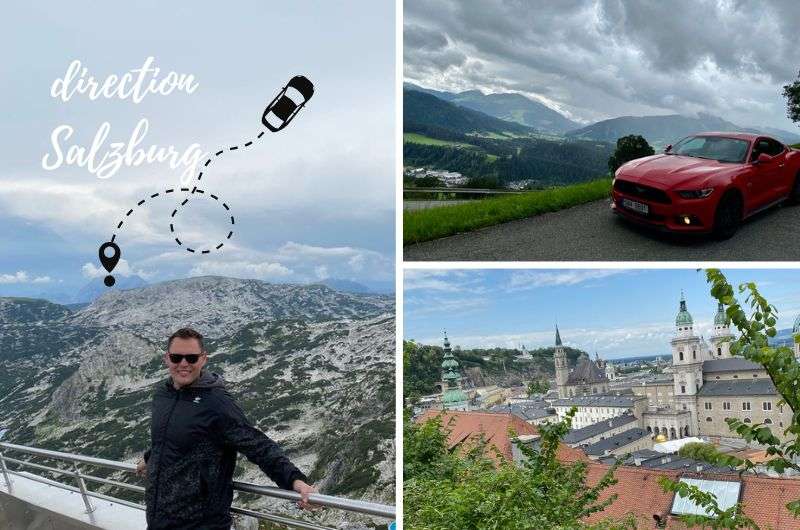
Salzburg in a nutshell: Epic views from Hohensalzburg, sleek thrills at Hangar-7, and just enough Mozart to say you did it
Quick tips for Salzburg
-
Don’t miss Hohensalzburg Fortress for the views and Hangar-7 if you’re into anything fast and shiny.
-
Avoid: Spending too much time in the Baroque Old Town unless you really love 17th-century architecture. It gets repetitive fast.
-
Crowds: Busy year-round, especially in summer.
-
Time needed: One day is plenty, even if you’re milking the Mozart or Sound of Music angle.
4. Graz: Austria’s coolest city you’ve probably never heard of
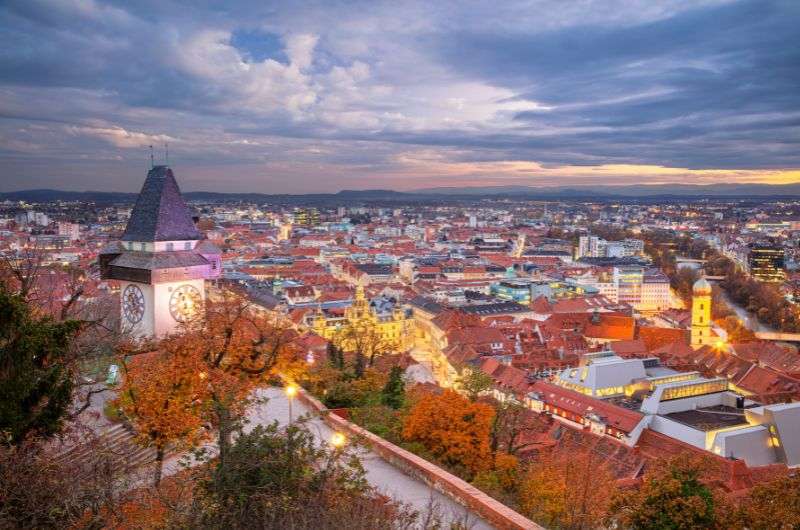
Graz is the city of art
Why I think it’s one of Austria’s best cities: Because it mixes historical streets with modern design, and it’s got just enough weird to make it interesting. Graz flies under the tourist radar, which is exactly why it’s worth your time.
Graz is Austria’s second-largest city, but you wouldn’t guess it. Sitting quietly between Vienna and Zagreb (Croatia), it’s got all the charm without the tourist mobs. It was the European Capital of Culture in 2003 and City of Design in 2009—and for once, those titles actually mean something, even all these years later.
I love that Graz’s Old Town is one of the best-preserved in Europe (and a UNESCO World Heritage site), packed with Baroque, Renaissance, and Gothic buildings that somehow work alongside futuristic architecture. The Kunsthaus Graz, a.k .a. The Friendly Alien looks like a giant bug that landed next to the cathedral, but it’s home to some solid contemporary art.
And Murinsel, a steel island in the middle of the river, is where you can grab a coffee inside a floating seashell. I just thought Graz was so cool.
Head up to Schlossberg Hill for the best views of the city, and whatever you do, don’t skip the Clock Tower, Graz’s most famous landmark. If you’re into quirky engineering, check out the double spiral staircase at the Grazer Burg—a mind-bending architectural trick from the 15th century.
Fun fact? Arnold Schwarzenegger was born just outside Graz. His childhood home is now a museum if you’re into bodybuilding nostalgia.
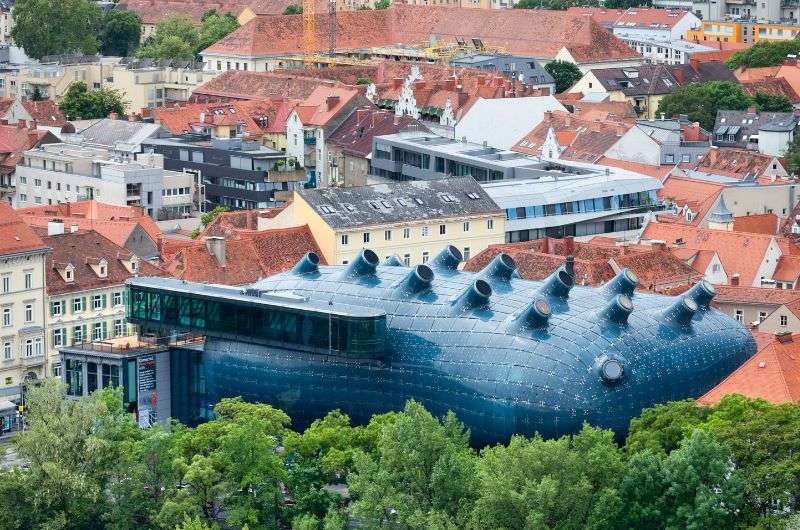
The Friendly Alien
Quick tips for Graz
-
Don’t miss: Schlossberg Hill and Clock Tower for the views and Kunsthaus Graz if you like your art a little weird.
-
Avoid: Expecting nightlife—it’s way more laid-back here.
-
Crowds: Manageable, even in peak season.
-
Time needed: One to two days, depending on how deep you want to dive into the art and architecture.
5. Linz: Austria’s underrated tech hotspot
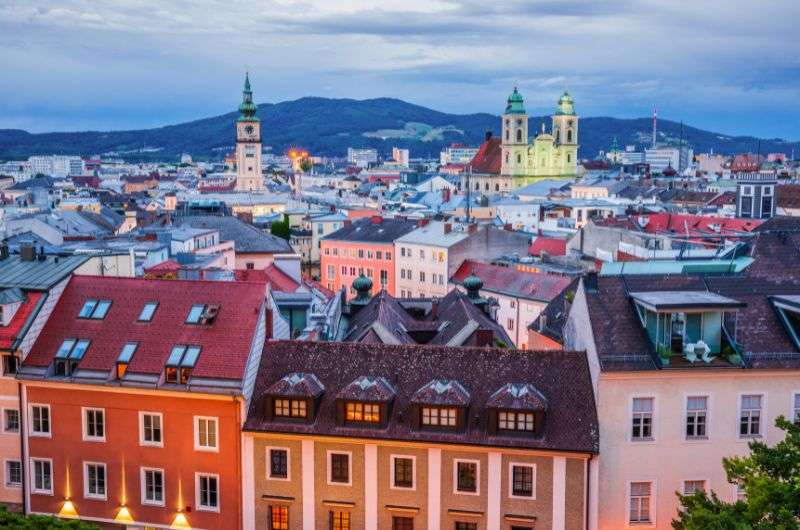
I love Linz!
Why I think it’s one of Austria’s best cities: Because it’s not stuck in the past. No other Austrian city blends history with futuristic tech the way Linz manages to.
Further reading: Top things to do in Linz (including tips for restaurants and hidden gems)
Linz is Austria’s third-largest city and has had a serious glow-up since its industrial days. It is now a UNESCO City of Media Arts.
I love Linz because it doesn’t pretend to be something it’s not. The Linz Castle blends old and new architecture in a way most cities wouldn’t dare, and the ARS Electronica Center is one of the best interactive tech museums I’ve been to—think less “read this plaque” and more “push this button and make something cool happen.” It’s the kind of place where you can easily kill a few hours geeking out.
Linz is also home to the Lentos Art Museum, another sleek, modern building packed with contemporary art that even I didn’t hate. It also gets lit up every night to strengthen the contrast between the old and new architecture.
There is a wide variety of restaurants, bars, and shops. And if you need a breather, walking along the Danube is actually relaxing because Linz isn’t overrun by tourists.
Basically, unlike other Austrian cities that seem allergic to change, Linz embraces it.
Quick tips for Linz
-
Don’t miss: ARS Electronica Center and the Lentos Art Museum.
-
Avoid: Expecting Vienna-level grandeur. Linz is for people who like innovation and cool art more than imperial palaces.
-
Crowds: Practically non-existent by Austrian standards.
-
Time needed: One day.
6. Bad Gastein: The best Austrian spa town is split by a waterfall
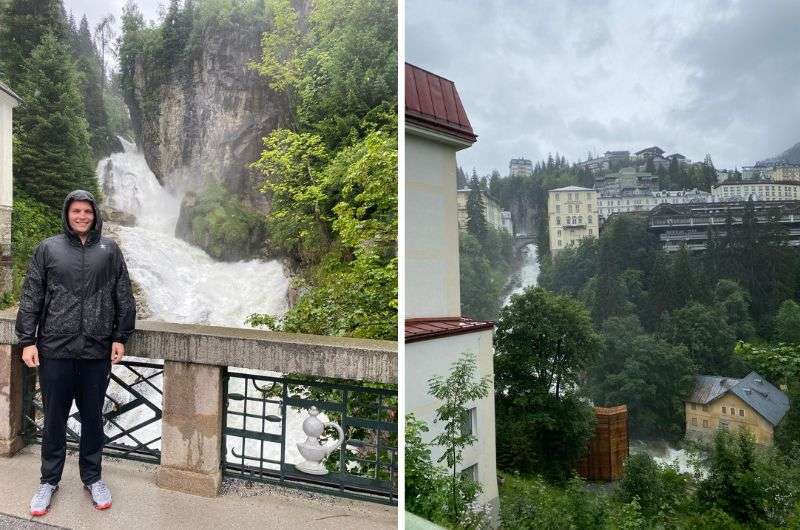
The Bad Gastein Waterfall is the best this city has to offer
Why I think it’s one of Austria’s best cities: Because nowhere else in Austria does a crumbling spa town get completely upstaged by a roaring waterfall—and somehow, that’s the charm. Bonus points from me for the fantastic hiking trails through spectacular Alpine scenery.
Further reading: My favorite hikes in Bad Gastein
Bad Gastein is weird. It’s a famous spa town and ski resort perched in the hills, and while the Belle Époque buildings still stand, most of them look like they’re waiting for someone to give them a second chance (or a wrecking ball).
That said, I found there’s something fascinating about it. There’s a gorge that cuts the city in half, and the river making its way through it forms a huge, magnificent waterfall. And that’s something I had to see.
Of course, there are the thermal spas that are a great place to recover after a rainy hike in the Alps—which, let’s be honest, is most hikes here in summer.
It’s not a place I’d stay for long- 4 hours tops unless you’re setting out on a hike or come here for the spas. But if you’re passing through, it’s worth a stop just to see how nature and city collide in the most dramatic way.

Are you ready for this?! @ Stubnerkogel
Quick tips for Bad Gastein
-
Don’t miss: The Bad Gastein Waterfall and the thermal spa after a long hike. The Gasteiner Höhenweg Loop Trail is perfect for half a day.
-
Avoid: Expecting a lively town. Half the place feels abandoned.
-
Crowds: Ok, unless you hit ski season.
-
Time needed: Half a day to one night if you’re hiking (or skiing).
7. Vienna: Austria’s polished capital (that I’m finally starting to un-hate)
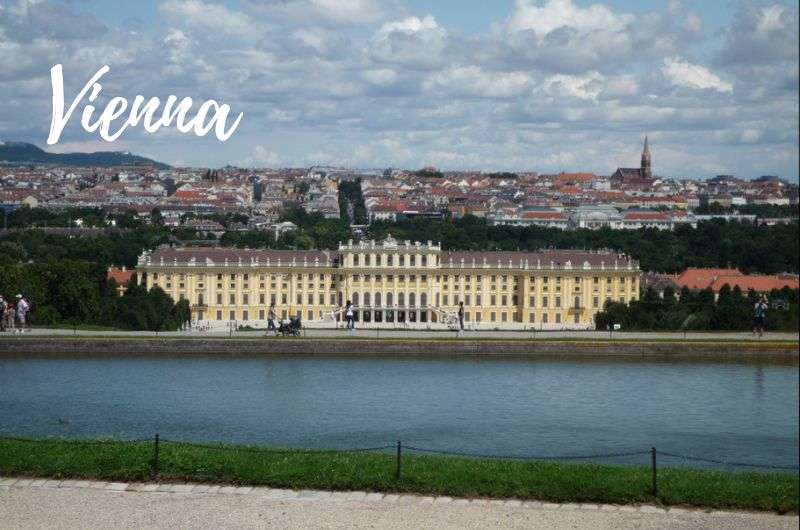
Schönbrunn
Why I think it’s one of Austria’s best cities: Because it’s the capital, it’s loaded with imperial history, and it’s clean, organized, and works like a well-oiled machine. If you give Vienna a chance, it might just win you over… eventually.
Further reading: 3 Days in Vienna: The Ultimate Itinerary (No Fluff)
Is Vienna worth visiting? Honestly, it depends on whom you ask. I used to say that if I were an Austrian Emperor, I would rather stay in Budapest. But I have finally seen the light… though not extremely bright, I think Vienna deserves a visit if it’s convenient to your trip. Otherwise, head to the other cities on this list first.
Let me explain. I used to think Vienna was overrated: elegant but boring, impressive but soulless. It felt like the kind of place you should visit, not one you want to.
But after a few more attempts, I can appreciate that Vienna’s clean, safe, and logistically, it’s one of the easiest cities to get around in Europe. And yes, there’s plenty to see—if you like imperial palaces and grand museums. And the Christmas market in December.
You need to climb to the towers of St. Stephen’s Cathedral (and see the catacombs, too), see Schönbrunn Palace, Austria’s version of Versailles (but adjust expectations), and visit Hofburg Palace, another imperial monster. If you’re into classical music and grand coffee houses, Vienna has those too.
What finally softened me to Vienna? The Schönbrunn Zoo, oddly enough. It’s small but well done, and yes—there are giant pandas! I’d go back to Vienna just for them.
So, no, Vienna isn’t my favorite city. But I’m finally willing to say it’s worth visiting.
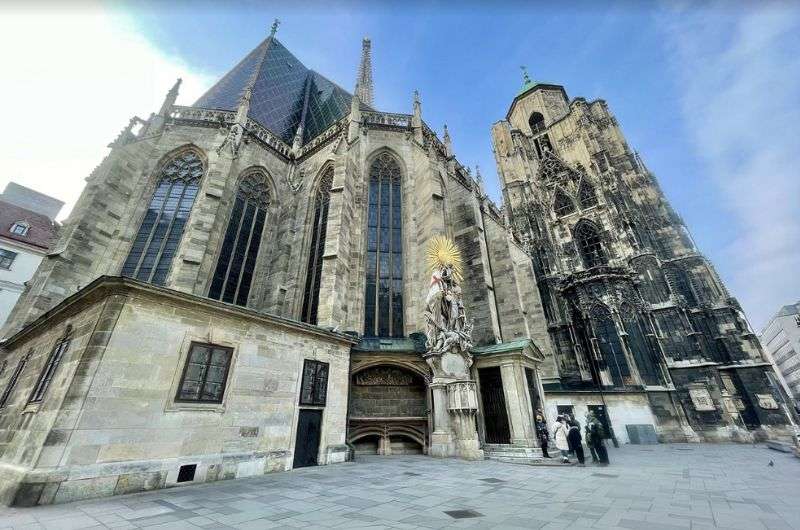
Stephansdom
Quick tips for Vienna
-
Don’t miss: The views from the towers of Stephansdom—check out those roof tiles! And the giant pandas at the Zoo and maybe a Sacher cake break—because when in Vienna…
-
Avoid: Expecting Prague or Budapest levels of charm. Vienna is Vienna.
-
Crowds: Busy like any big city, but not completely overrun by tourists.
-
Time needed: Two to three days to cover everything without rushing.

Is Salzburg prettier than Vienna?
Yes, Salzburg is prettier than Vienna—at least if you’re into Baroque palaces, a fortress on a hill, and a compact old town that looks like a movie set. Just be prepared for the tourist crowds trying to re-enact The Sound of Music. For me personally, both Salzburg and Vienna are overrated.
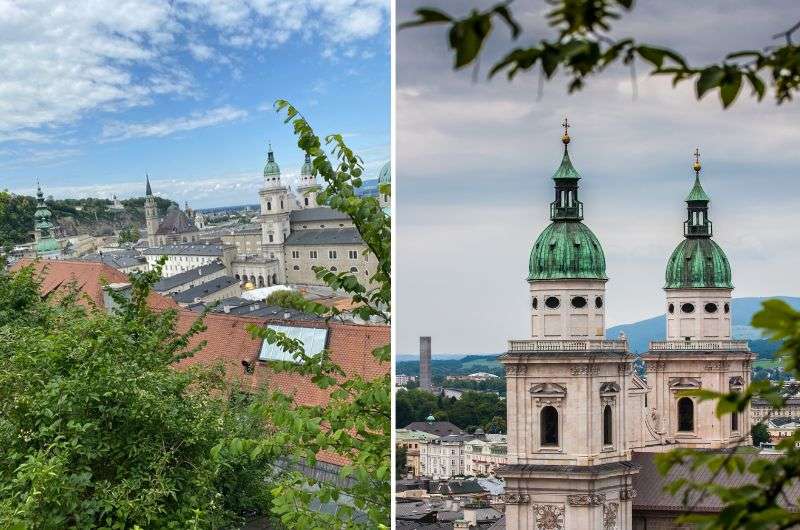
Salzburg's old town charms with its Baroque towers, hilltop fortress, and nice views
What is the magical town in Austria?
That would be Hallstatt. It’s Austria’s postcard-perfect village, complete with a lake, mountains, swans, and a history that dates back 7,000 years. It’s so magical the Chinese and Turks cloned it. Yes, it’s overcrowded, but it’s still ridiculously beautiful—stay overnight to catch it when it’s not swarming with day-trippers.
What is the most visited city in Austria?
Vienna is the most visited city in Austria, and that’s no surprise—it’s the capital, after all. It’s packed with imperial palaces, museums, and history that draws millions every year. Whether it deserves that many visitors is up for debate, but hey, it’s clean, organized, and the coffee culture is strong.
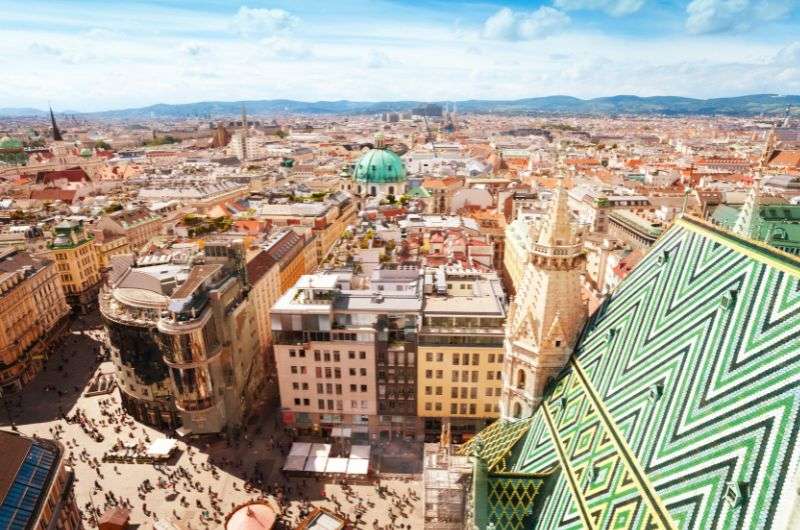
Vienna—I don’t hate it anymore!
Where to go in Austria for a weekend?
For a weekend in Austria, Innsbruck is your best bet. You get medieval old town charm, the Alps right in your face, and plenty of easy day trips to keep you busy—whether you’re hiking, skiing, or riding funiculars for the views. If you prefer something more laid-back, head to Graz for artsy vibes and fewer tourists.
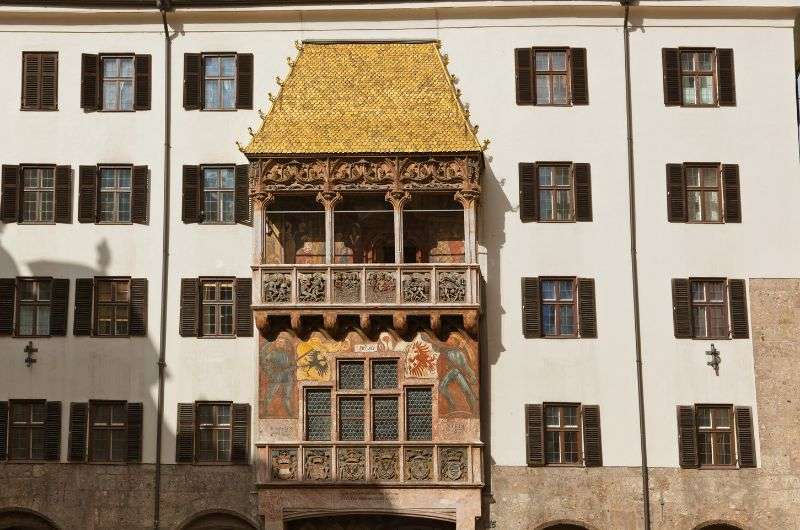
The iconic Golden Roof (Goldenes Dachl) in Innsbruck’s Old Town—an ornate balcony covered with 2,657 fire-gilded copper tiles, built for Emperor Maximilian I.
What is the most beautiful small town in Austria?
Hallstatt takes the crown for Austria’s most beautiful small town. It’s the place I’ve returned to the most, with alpine houses clinging to cliffs and a lake that looks photoshopped. Yes, it’s super touristy, but sometimes places are famous for a reason—and Hallstatt earns its reputation.
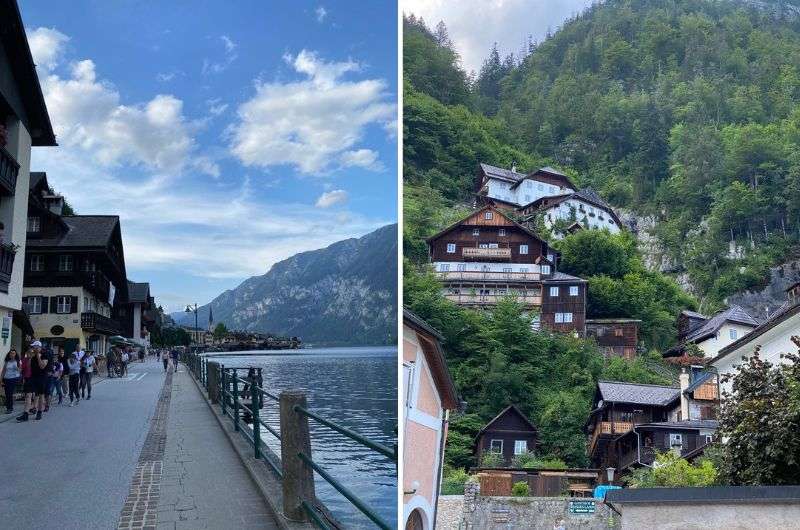
Hallstatt—the winner of the most beautiful city in Austria
You might also be interested in reading:
- A Detailed 10-Day Austria Itinerary
- 3 Days in Vienna: The Ultimate Itinerary
- What is Austria Known For? 13 Tips and Tricks for Your Vacation
- 9 Unusual Things to do in Vienna
Sometimes, all you need to do is take the first step... I've filtered out the best hotels in Austria for you
Save it for yourself to come back to later, or share with your friends on social media!
This post contains affiliate links. If you make a booking through one of my links, I may earn a small commission—at no additional cost to you. Thank you for your support!





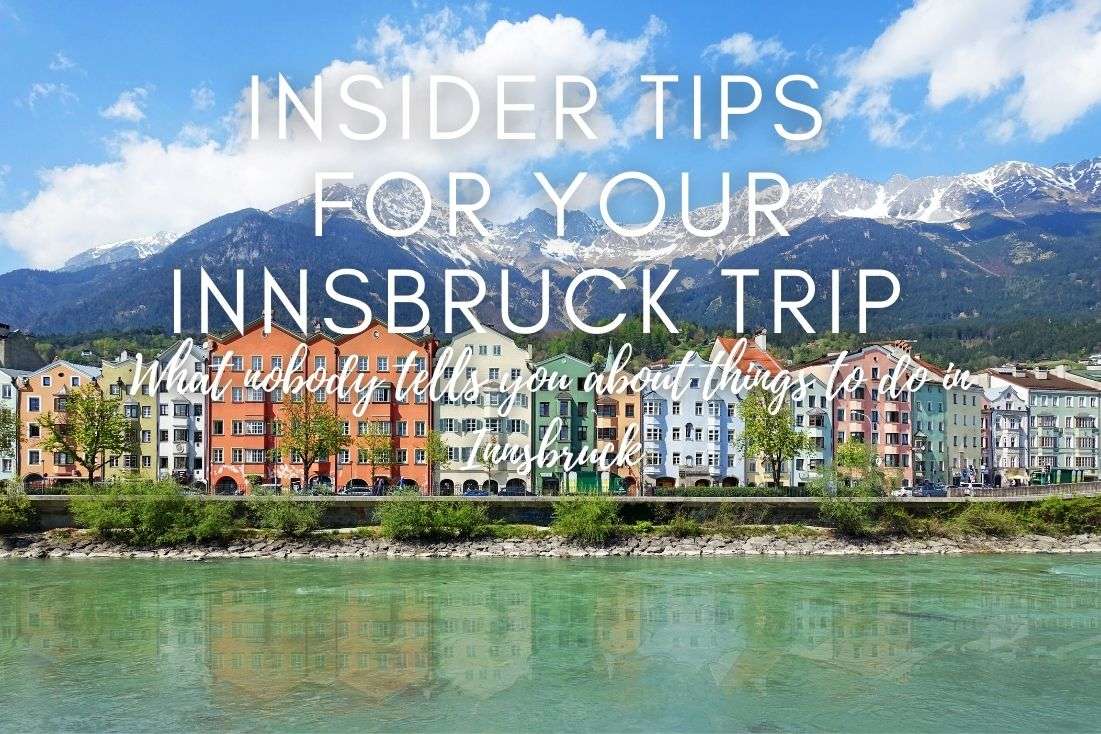

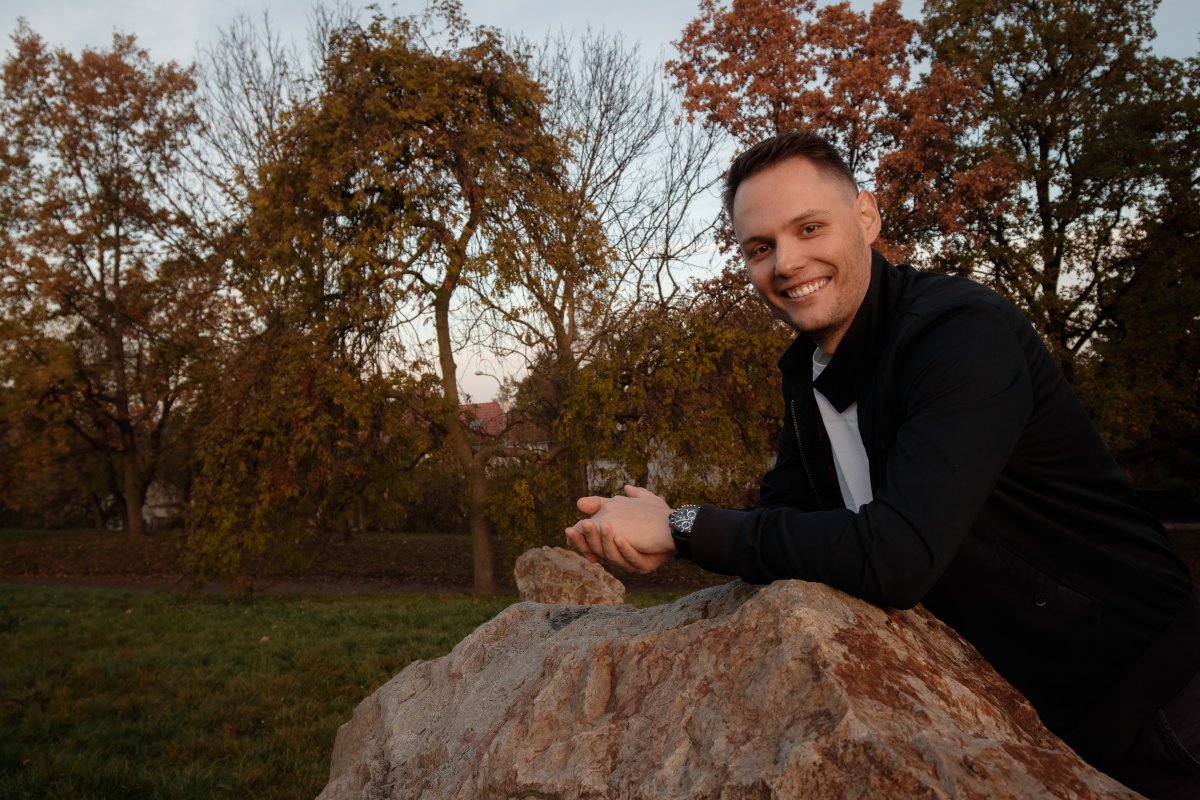


Comments | Thoughts? Give us a shout!